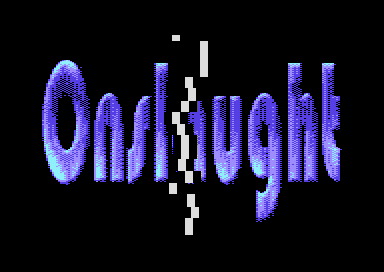| VOA by Onslaught [web] | ||||||||
|---|---|---|---|---|---|---|---|---|

|
|
|||||||
|
popularity : 56% |
|||||||
alltime top: #21622 |
|
|||||||
|
||||||||
| added on the 2014-08-12 04:05:18 by algorithm |
||||||||
popularity helper
comments
Cool stuff...
now let's see if we can get it on POKEY, too ;)
now let's see if we can get it on POKEY, too ;)
Very impressive!
Sounds good on 6581 but crappy on a new one.
awesome tech stuff, as always!
video is not available in Finland, wth..
Algorithm awesome as usual :D
@Algorithm. I think there is a small bug in the demo. I guess you try to detect the sid-modell but if you have a new one with a 330 Ohm resistor (old trick to hear samples) then it's totally crappy. You can even hear this within the vice-emulator. That was also the reason why I wrote it sound crappy, on a old one or a *stock* new one, the music is goog.
Amazing!
Rutube video, available so far, without any copyright issue :)
http://rutube.ru/video/d6c51f80ca2593b84bf0c9fbe7267475/
http://rutube.ru/video/d6c51f80ca2593b84bf0c9fbe7267475/
tech porn
submit changes
if this prod is a fake, some info is false or the download link is broken,
do not post about it in the comments, it will get lost.
instead, click here !

It is a huge improvement over VQ based methods as it freely allows sliding references into the 4k wavetable instead of being snapped to chunks (8,16 etc) furthermore for quality increase, each chunks amplitude can be updated to 1 of 16 volume levels.
This allows a total of over 65000 16 byte chunks that can be recreated by only a 4k wavetable
This particular example compresses each 16 byte sample into two bytes which consist of a 12bit value for the offset into the wavetable and 4bits of amplitude.
I could have created the full decode via nmi and to reconstruct the next set of 16 bytes (or prepare offset/amplitude) while the previous 16 is being read, but this first implementation worked and left it at that
The oscilliscope effect is rather basic and updates sprite y pointers after each 16 byte chunk has been decoded into the buffers. Per line update could have been possible, but most of the code had been finished already and did not recode the demo.
The demonstration utilises the filter based d418 method, hence quality may vary on machine to machine, however autodetect is used in the demo in order to try and ensure that quality does not suffer between the two sid models.
The example tune has many repeating sections, however this encode method works well for any type of audio including audio with no repeating sections.
Quality can be increased further via multiple offsets and mixing (infact i have already created encoders that can mix 4 chunks with amplitude) To be implemented in a future demo
Disk is 40 tracks. Also remember that if you are running this demo on an emulator, make sure it has accurate sid emulation (preferably latest version of winvice or micro64) It does not sound too great on hoxs64